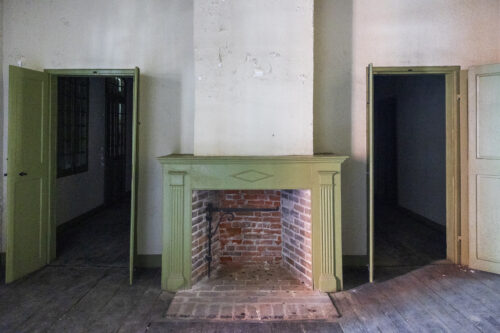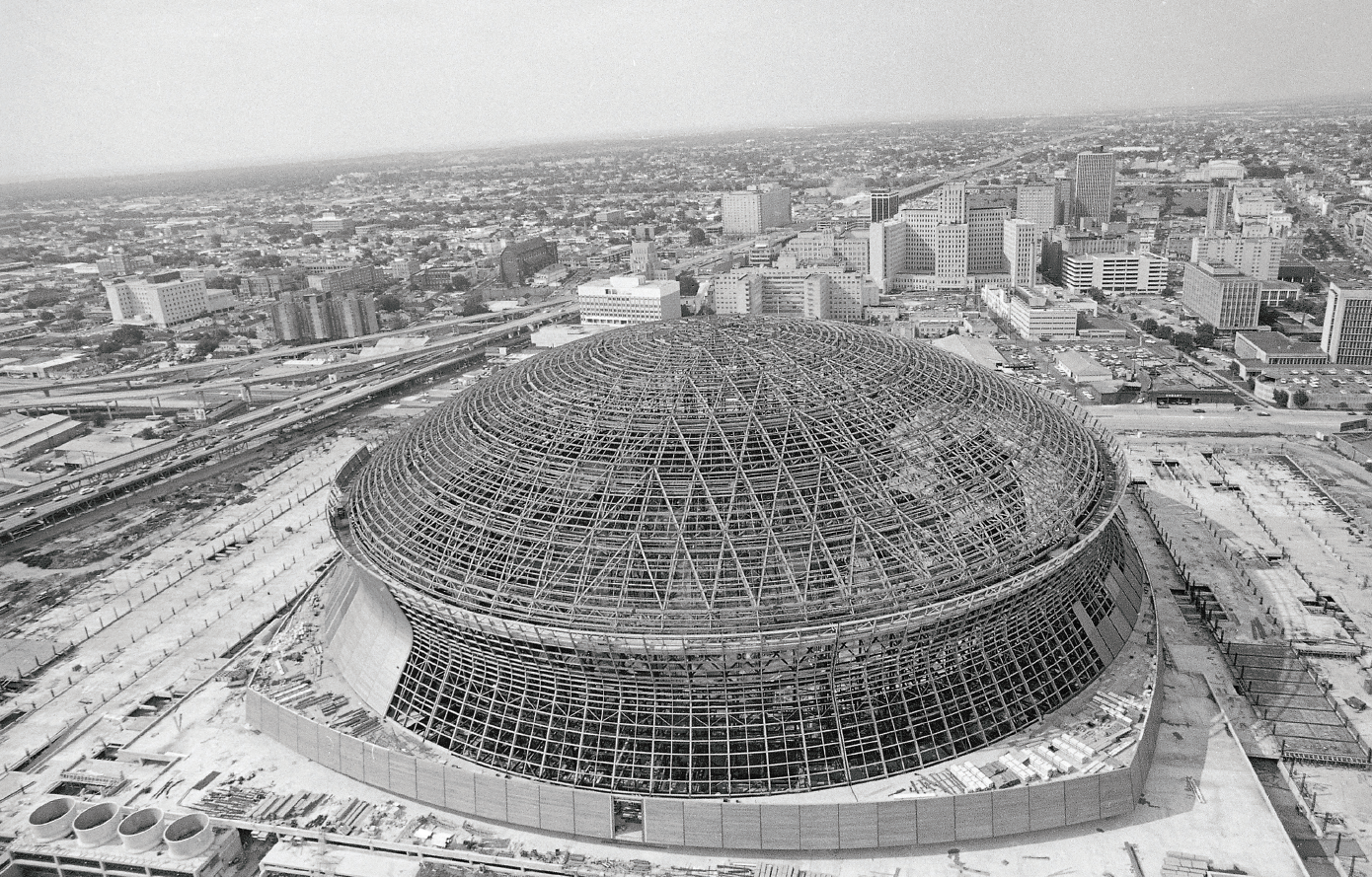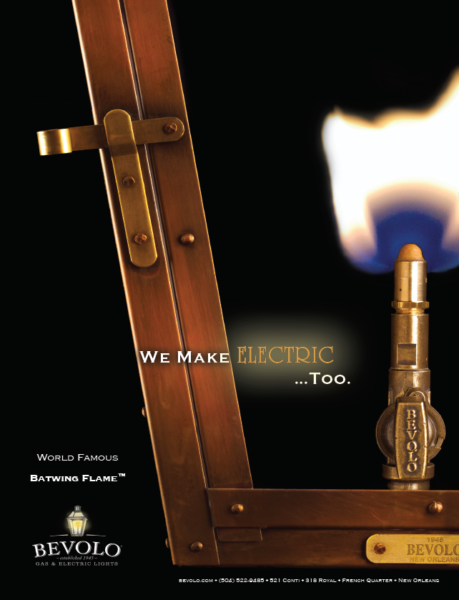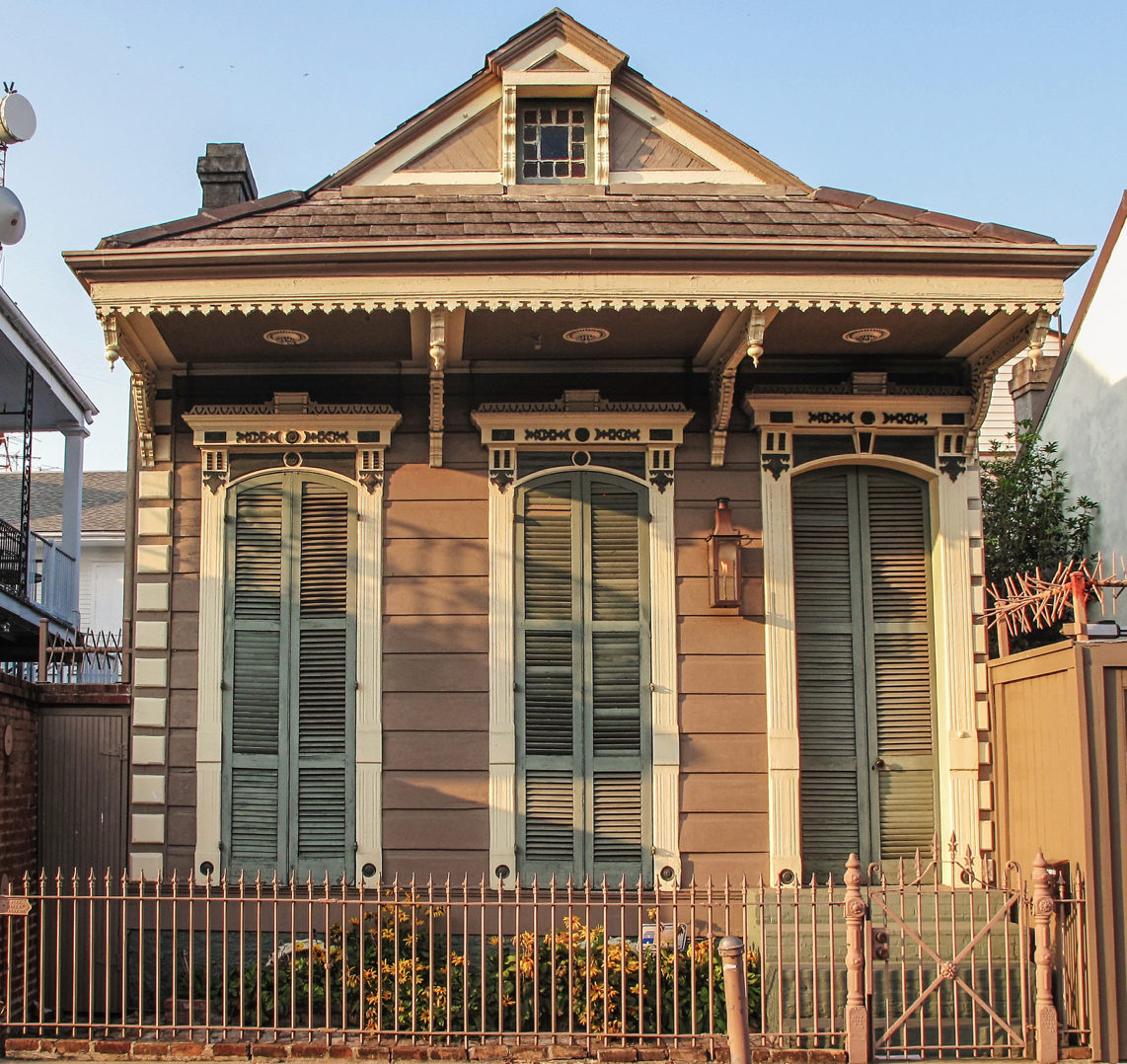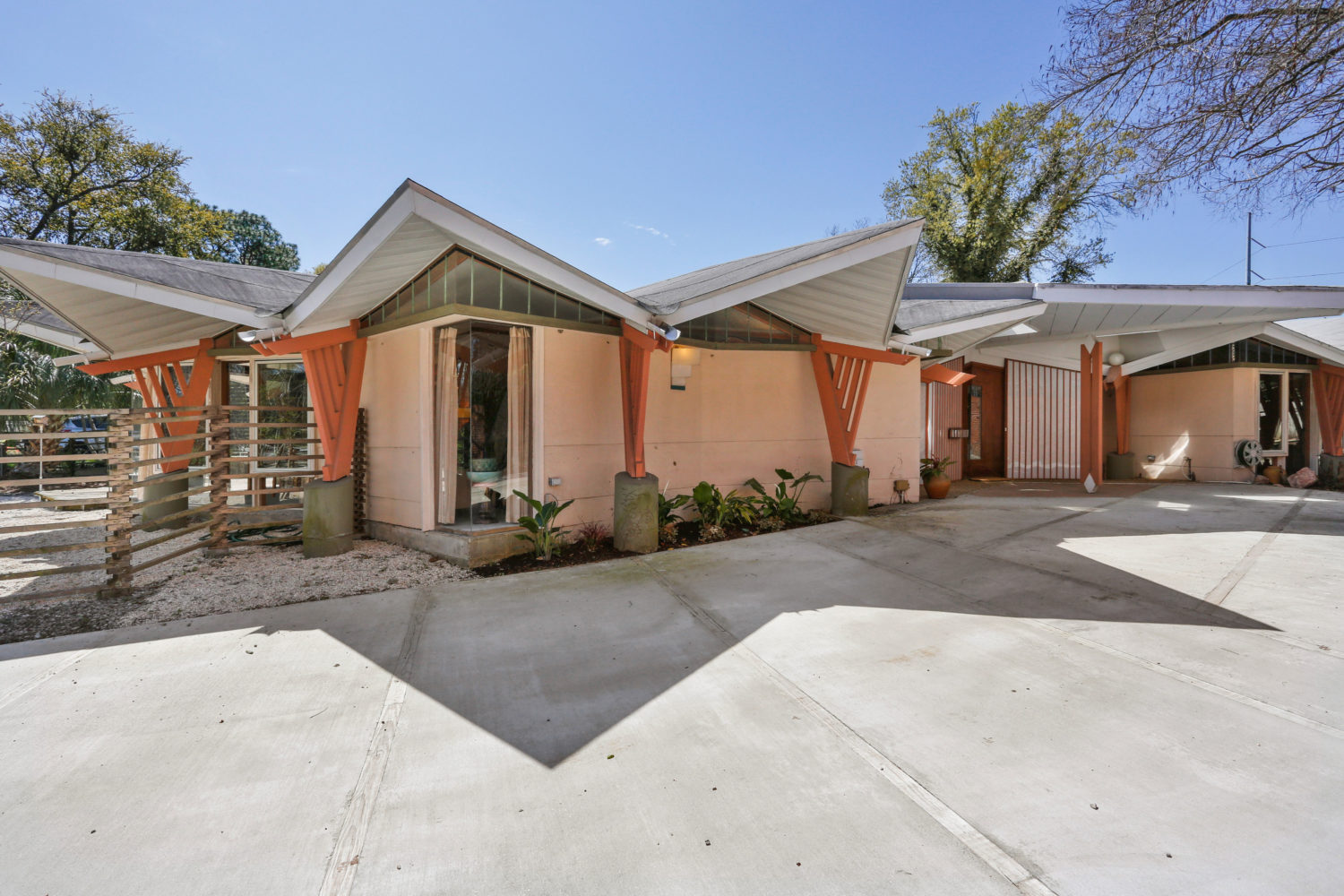Even at the beginning of 1970, Poydras Street was starting to launch. Running 1.2 miles from old riverfront warehouses to the still new Interstate 10 over Claiborne Avenue, it was about to become the most arresting physical manifestation of one of the most dramatic decades in New Orleans history. The transformation would happen quickly and would stop abruptly not long after the decade’s end. A booming oil industry would drive the construction on Poydras of more than a dozen International-style corporate office towers — along with hotels and a new federal courthouse — by the time the bust came in the mid-1980s.
In the mid-1960s, under Mayor Victor Schiro, Poydras Street was expanded from 74 feet near the river-end to 134 feet. The widened and landscaped Poydras had made a step in the direction of its future grandeur by serving as a more prestigious approach to the two key 1968 buildings where Poydras and Canal Street came together near the riverfront — the International Trade Mart and the swooping Rivergate exhibition hall.
But the longer vista up Poydras, at the beginning of 1970, featured no new construction. The only modern structure on the horizon was off in the distance, on Loyola Avenue blocks up from Poydras, near the Pontchartrain Expressway. The 45-story Plaza Tower had opened in 1968 on a bet that Loyola Avenue would become the boulevard of corporate architecture. But two forces not yet visible on the streets downtown would make Poydras the winner of that bet.
Advertisement
First, the price of oil would increase over the decade. That justified more exploration and production, much of it enabled by new technologies that facilitated wells in wetlands and in deep water offshore. Louisianans developed skills that served the big companies, and the big companies believed that New Orleans would be a convenient and entertaining regional headquarters.
Second, the Superdome would rise out of the ground. Already approved by Louisiana voters in a 1966 constitutional amendment that created a state-sponsored Superdome Commission, with a massive but graceful design that would outsize rival Houston’s Astrodome. Construction began in 1971 on the building that would become New Orleans’ chief icon into the 21st century.
Long discussed in tandem with a desire for a professional football franchise for New Orleans, the idea of a covered stadium made a media splash in the last days of the 1965 Democratic primary for mayor, when Vic Schiro, seeking his second full term against City Councilman James E. Fitzmorris Jr., announced a plan. He proposed an all-weather stadium big enough for two football fields and accommodating 60,000 people, with parking for 20,000 cars on a donated 100-acre site in the Lake Forest section of Eastern New Orleans. Construction would be contingent on landing a pro-football team. While Schiro’s narrow November victory may have been helped more by his steady performance during Hurricane Betsy two months earlier, he credited his stadium plan for part of his 3,319-vote margin over Fitzmorris.
The Superdome idea had many parents. Schiro and his careful biographer, Edward F. Haas, argued that this mayor originated it. And David Dixon, the effective and tireless promoter and catalyst behind both the Superdome and the football team, himself often regarded as the inventor of the stadium, said later that Schiro’s campaign announcement was “where we got our start.” It was a fast start, indeed. Gov. John McKeithen endorsed the idea at the end of 1965 and pledged to build a great dome before he left office, perhaps counting on a second term that would carry him to 1972. He appointed finance and site-selection committees and pushed the statewide constitutional amendment vote that would bring state management and a hotel tax to pay for it.
On Nov. 1, 1966, the National Football League awarded New Orleans a franchise — with some effective leverage from the powerful Louisiana congressional delegation. The newly formed New Orleans’ Saints played their first regular season game in September 1967 at Tulane’s capacious stadium, and bided the years to the opening of the Superdome.
A critical decision had been where to put the stadium but support emerged quickly for a location downtown — supported by Gov. McKeithen, Dave Dixon, the Chamber of Commerce, and, importantly, by City Councilman-at-large Moon Landrieu. Landrieu would become mayor in 1970 and was a champion of locating economic assets and investment in the core areas of the city. He believed strongly in having the stadium downtown and helped arrange for the specific location, on mostly abandoned railroad company property. “For the good of the city,” Landrieu said in a recent interview, “I was determined to put it downtown.” As chairman of the Superdome Commission, he pushed the project along, and as mayor he strongly influenced its opening and management. Downtown stadiums, with their ability to stimulate nearby real estate development and to bring people from the suburbs and other cities, are now regarded as good planning and the norm for most major sports teams.
This stadium, with a durable and singular design by architect Nathaniel C. Curtis, has performed those services for over four decades. Its opening followed significant cost overruns — from $36 million in the original sales pitch to $163 million — as well construction delays. The NFL committed to playing the January 1975 Super Bowl IX there, but had to move the game to Tulane, because the Dome wasn’t ready. Opening day was August 3, 1975.
By then, Poydras Street high-rises had been sprouting. In 1972, Joseph C. Canizaro, a young independent Mississippi-born developer, opened the Lykes Center and Shell Oil Company moved into what is still the city’s tallest building, One Shell Square. Local developers made space available for Texaco, Mobil, Amoco, Exxon, Gulf, Louisiana Land and Exploration, Freeport-McMoran — moving many out of smaller older quarters elsewhere in the Central Business District. Three of the towers went up directly across Poydras from the Dome. Three of the companies were in the development that abutted the Dome, called Poydras Plaza, which also offered a Hyatt Regency Hotel and a headquarters for Entergy.
And then it stopped. The price of oil dropped after 1980, kept sliding and then crashed dramatically in 1986. It was “the worst recession to hit the Pelican State in modern times,” The New Orleans Advocate wrote in 2015. Businesses and banks closed, subdivisions were halted, Louisiana oil production virtually stopped, and state unemployment became the highest in the country.
The last Poydras oil buildings in the developers’ pipeline were finished in the mid-1980s. Canizaro was last, in 1986, with the LL&E building, which showed no signs of poverty on the surface, with two large heroic sculptures by Enrique Alferez flanking the doors. After that oil companies started to consolidate and leave town, back to their headquarters in cities elsewhere.
The 1970s made a New Orleans that would survive largely intact until 2005. The city would begin a chronic recession and spiritual decline in the 1980s that would last through the century and beyond — until the shock of Hurricane Katrina re-energized its people, economy and culture once more. The development of the 1970s may help New Orleans live better in the post-Katrina decade, whether the next steps lead to bust or boom.
Photo courtesy SMG New Orleans. Essay excerpted from New Orleans & The World: 1718-2018 Anthology.
Advertisements

